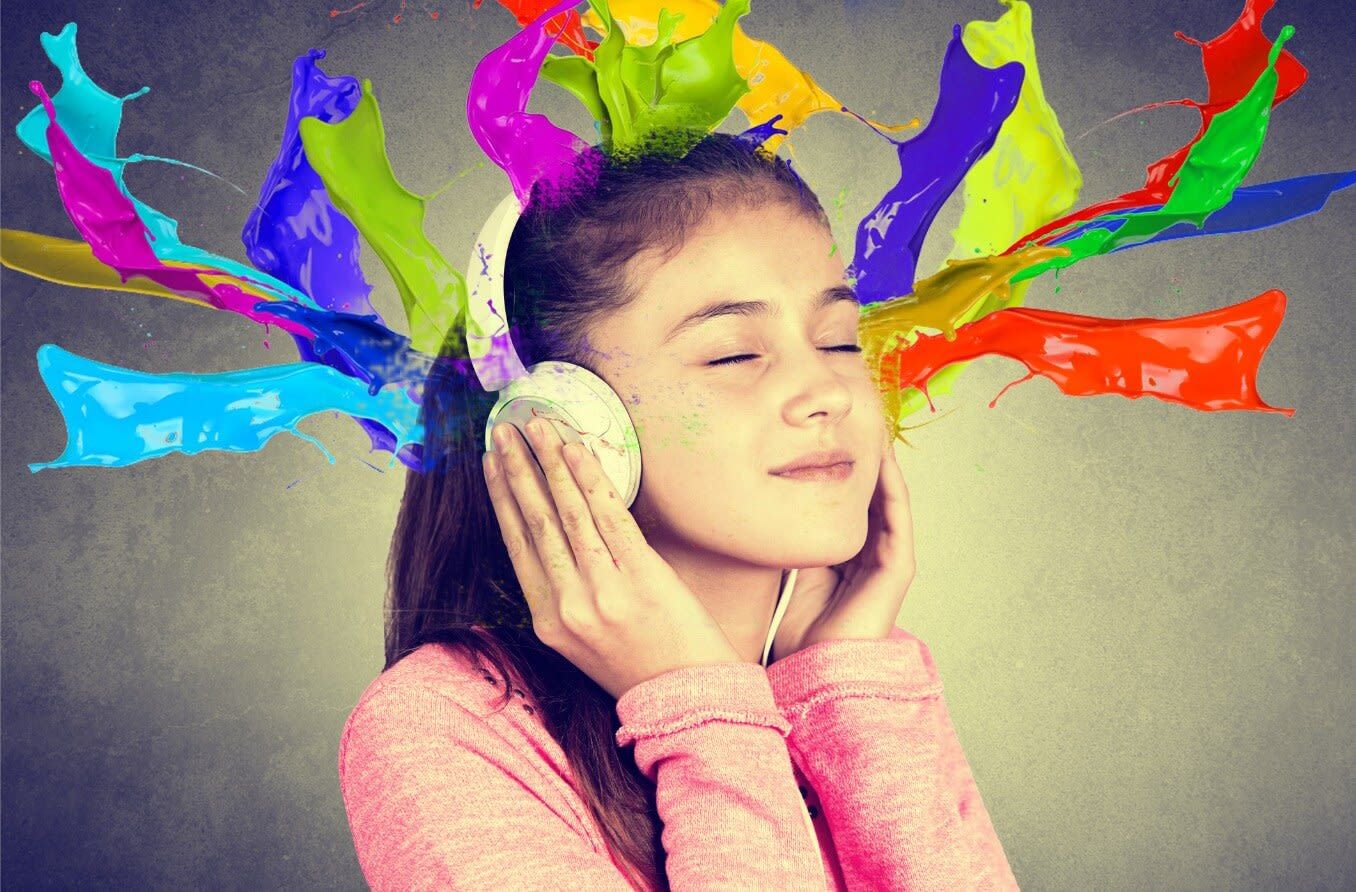
Synesthesia is a fascinating neurological phenomenon that blurs the lines between perception and experience. It occurs when sensory information triggers additional experiences in unrelated senses. Imagine seeing colors when you hear music or tasting flavors when you touch certain textures. This merging of the senses is like stepping into a world where everything is amplified and connected in unexpected ways.
In this article, we will explore 10 intriguing facts about synesthesia, delving into the science behind it, the different types of synesthesia, famous synesthetes throughout history, and how it impacts their everyday lives. Get ready to embark on a mesmerizing journey into the minds of individuals who experience the world in a way that is truly beyond ordinary perception.
Key Takeaways:
- Synesthesia is a fascinating neurological phenomenon where one sense triggers another, like seeing colors when hearing music. It’s more common than you’d think and can enhance creativity in artists and musicians.
- While not a disorder, synesthesia can be both enjoyable and overwhelming, with varying intensity and triggers. Ongoing research aims to understand its evolutionary advantages and potential therapeutic implications.
Synesthesia is a neurological phenomenon.
Synesthesia is a condition in which stimulation of one sensory or cognitive pathway leads to automatic and involuntary experiences in another pathway. This means that individuals with synesthesia may perceive certain stimuli, such as numbers, letters, or sounds, as having a specific color, taste, or texture.
Synesthesia is more common than you might think.
Research suggests that approximately 4% of the population has some form of synesthesia. It occurs more frequently in women and is often hereditary, with a higher likelihood of experiencing synesthesia if a family member also has the condition.
There are different types of synesthesia.
Synesthesia can manifest in various ways, involving different combinations of senses. Some individuals may experience grapheme-color synesthesia, where letters and numbers are associated with specific colors. Others may have sound-color synesthesia, associating sounds or music with particular hues.
Synesthesia can enhance creativity.
Many artists, writers, and musicians with synesthesia report that their condition enhances their creative abilities. The intertwining of senses can provide a unique perspective and inspire innovative ideas. Famous individuals such as Vincent Van Gogh and Billy Joel are said to have had synesthesia.
Synesthesia can be both enjoyable and overwhelming.
While synesthesia can be a source of delight and inspiration, it can also be overwhelming at times. The constant sensory stimulation can become intense and distracting for some individuals. However, with proper management and understanding, synesthetes can learn to navigate their experiences.
Synesthesia is not considered a disorder.
Synesthesia is not classified as a disorder in the Diagnostic and Statistical Manual of Mental Disorders (DSM-5). Instead, it is considered a neurological phenomenon. Many synesthetes live fulfilling lives and view their condition as an enriching aspect of their perception.
Synesthesia may have evolutionary advantages.
Some researchers propose that synesthesia may have conferred evolutionary advantages to our ancestors. The blending of senses could have aided in memory retention, problem-solving, and communication. Further studies are being conducted to understand the evolutionary significance of synesthesia.
Synesthesia can vary in intensity and consistency.
Not all synesthetes experience their perceptions in the same way. The intensity and consistency of synesthetic experiences can vary from person to person. Some individuals may have vivid and consistent associations, while others may have milder or sporadic instances.
Synesthesia can be triggered by specific stimuli.
Synesthesia can be elicited by different triggers, depending on the individual. Some synesthetes may experience specific color associations when exposed to certain sounds, while others may have tactile sensations when seeing particular images. Each synesthete’s trigger is unique to their sensory connections.
Synesthesia research is ongoing.
Scientists continue to explore the complexities of synesthesia. Research aims to understand the neurological mechanisms behind the condition, its genetic basis, and potential therapeutic implications. The study of synesthesia offers insights into the fascinating ways our brains perceive and process information.
Conclusion
Synesthesia is a fascinating phenomenon that involves a blending of the senses. Through this article, we’ve explored 10 fascinating facts about synesthesia and gained a deeper understanding of this unique sensory experience. From the variety of types and subtypes of synesthesia to its potential benefits and challenges, we’ve learned that synesthesia is a complex phenomenon that brings together different senses in unexpected ways.Synesthesia has been the subject of scientific research for many years, and although there is still much to uncover, we have made significant progress in understanding and appreciating this extraordinary condition. It is a testament to the remarkable diversity of human perception and cognition.Whether you have synesthesia yourself or know someone who does, learning about this condition can foster a greater appreciation for our individual differences and open doors to new ways of experiencing the world around us. Synesthesia serves as a reminder that our perceptions are unique and should be celebrated.
FAQs
1. What is synesthesia?
Synesthesia is a neurological condition where stimulation of one sensory or cognitive pathway leads to involuntary experiences in a different or multiple senses.
2. How common is synesthesia?
Synesthesia occurs in about 1 in 2000 people, making it a relatively rare condition.
3. Can synesthesia be learned or acquired?
No, synesthesia is typically present from birth and is considered a lifelong condition.
4. What are the different types of synesthesia?
There are several types of synesthesia, including grapheme-color synesthesia, where letters and numbers are perceived as inherently colored, and sound-color synesthesia, where sounds are associated with specific colors.
5. Is synesthesia a form of hallucination or mental illness?
No, synesthesia is not a hallucination or mental illness. It is a natural variation in sensory perception and does not indicate any underlying psychopathology.
6. Can synesthesia be beneficial?
Yes, synesthesia can have certain advantages, such as enhanced memory and creativity, as individuals with synesthesia often have unique associations between different sensory inputs.
7. Can synesthesia be treated or cured?
Currently, there is no known cure for synesthesia as it is a neurological condition. However, individuals with synesthesia can learn to manage and embrace their unique sensory experiences.
8. Can synesthesia be passed down genetically?
There is evidence to suggest that synesthesia can run in families, indicating a genetic component to its occurrence.
9. Can synesthesia change or fluctuate over time?
While the core experiences of synesthesia tend to remain consistent, some people report that their associations may change or evolve over time.
10. How can I learn more about synesthesia?
There are various resources available, such as books, articles, and online communities, where you can learn more about synesthesia and connect with others who share the experience.
Was this page helpful?
Our commitment to delivering trustworthy and engaging content is at the heart of what we do. Each fact on our site is contributed by real users like you, bringing a wealth of diverse insights and information. To ensure the highest standards of accuracy and reliability, our dedicated editors meticulously review each submission. This process guarantees that the facts we share are not only fascinating but also credible. Trust in our commitment to quality and authenticity as you explore and learn with us.


